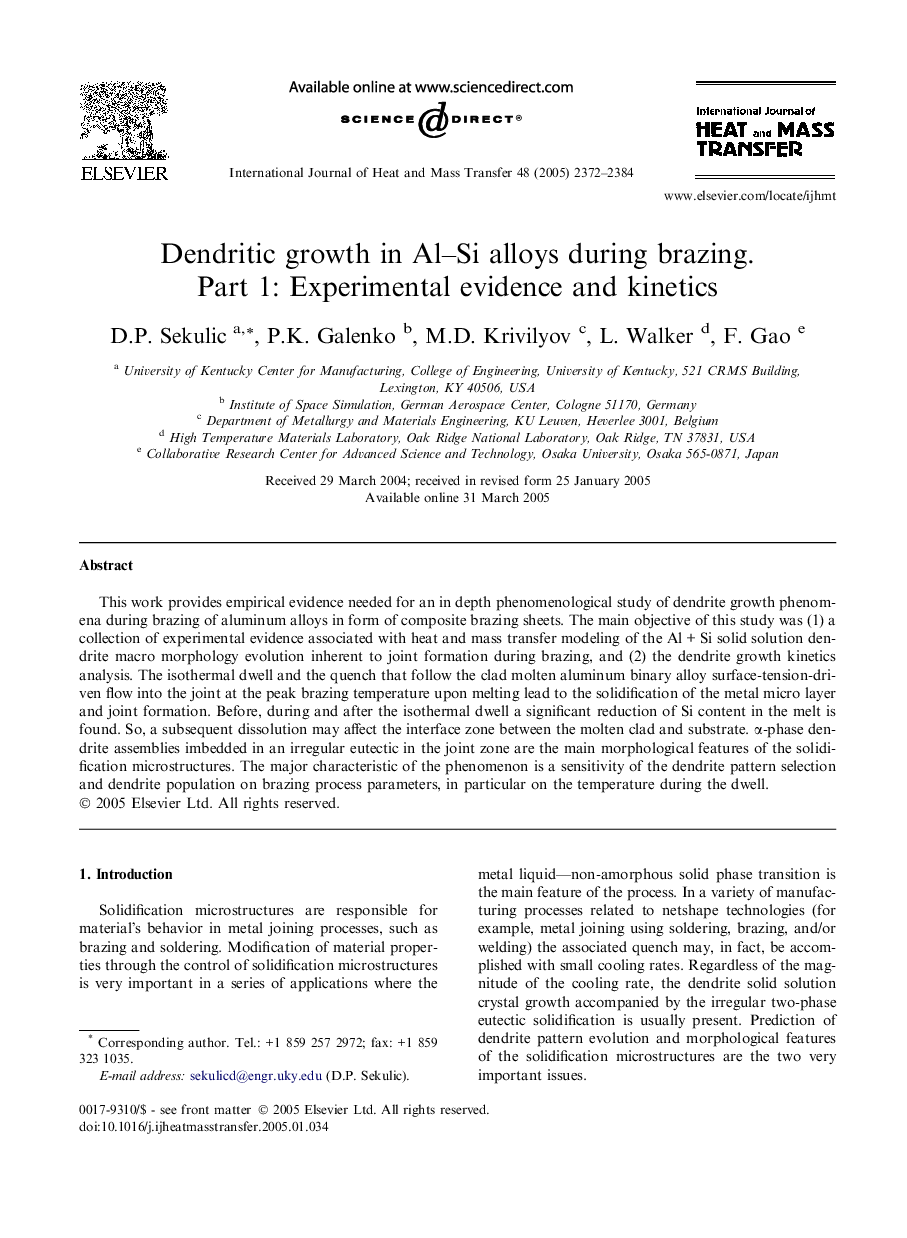| Article ID | Journal | Published Year | Pages | File Type |
|---|---|---|---|---|
| 663156 | International Journal of Heat and Mass Transfer | 2005 | 13 Pages |
This work provides empirical evidence needed for an in depth phenomenological study of dendrite growth phenomena during brazing of aluminum alloys in form of composite brazing sheets. The main objective of this study was (1) a collection of experimental evidence associated with heat and mass transfer modeling of the Al + Si solid solution dendrite macro morphology evolution inherent to joint formation during brazing, and (2) the dendrite growth kinetics analysis. The isothermal dwell and the quench that follow the clad molten aluminum binary alloy surface-tension-driven flow into the joint at the peak brazing temperature upon melting lead to the solidification of the metal micro layer and joint formation. Before, during and after the isothermal dwell a significant reduction of Si content in the melt is found. So, a subsequent dissolution may affect the interface zone between the molten clad and substrate. α-phase dendrite assemblies imbedded in an irregular eutectic in the joint zone are the main morphological features of the solidification microstructures. The major characteristic of the phenomenon is a sensitivity of the dendrite pattern selection and dendrite population on brazing process parameters, in particular on the temperature during the dwell.
